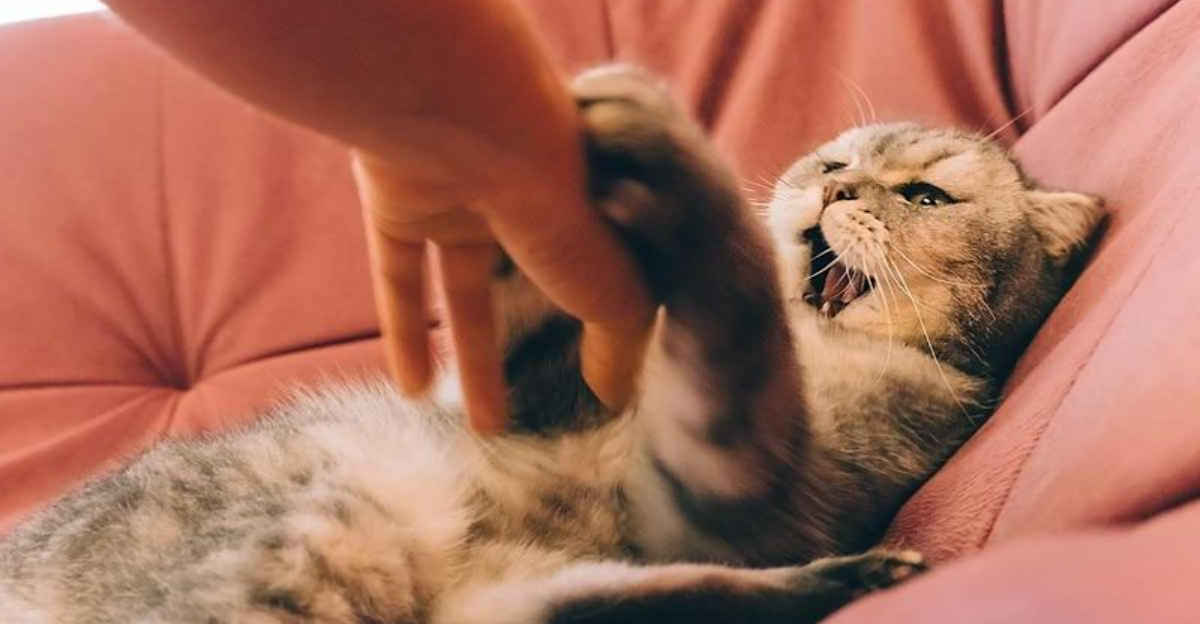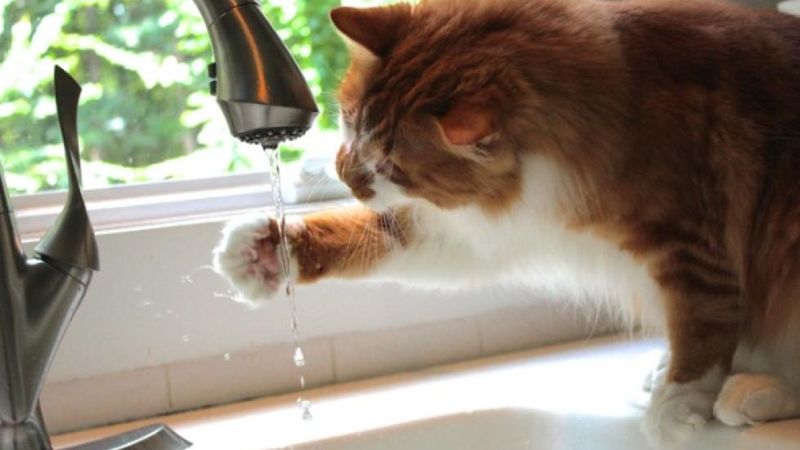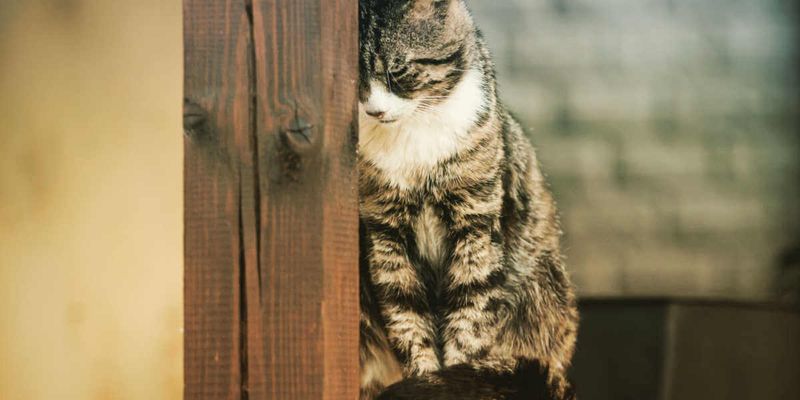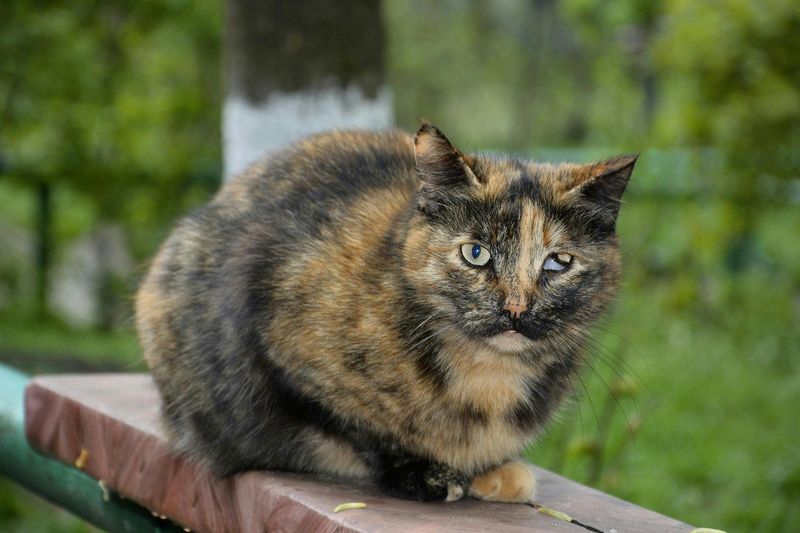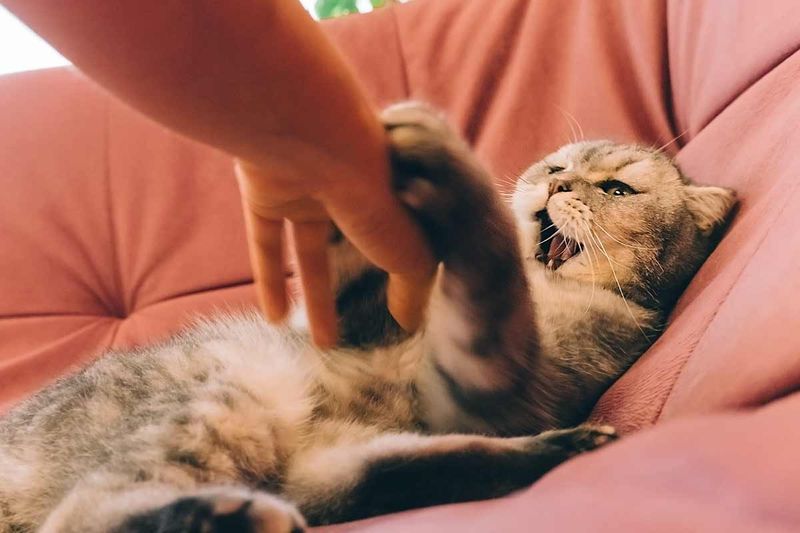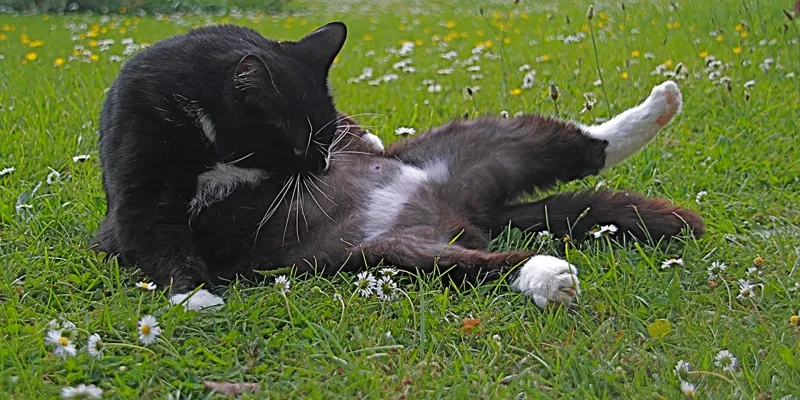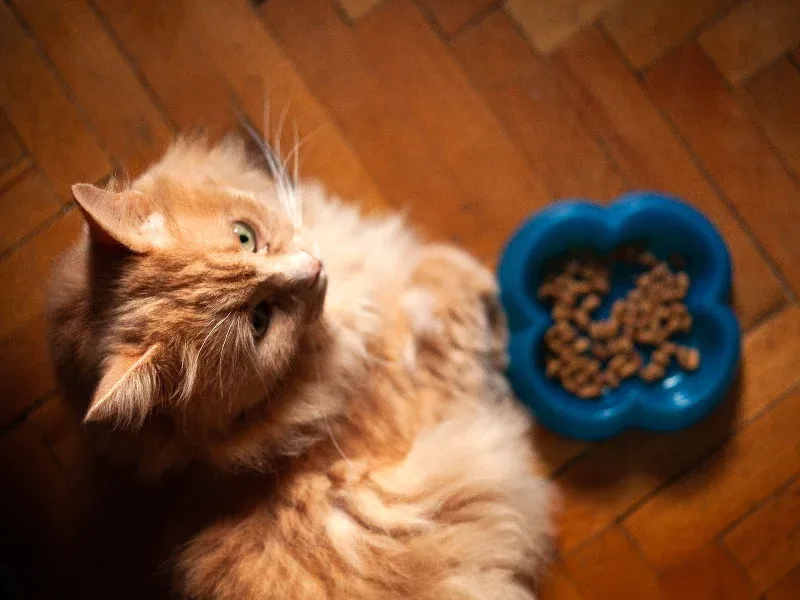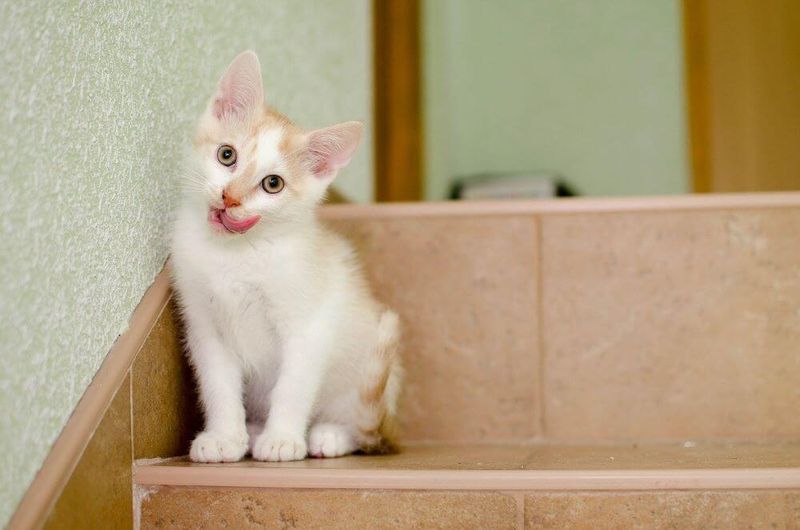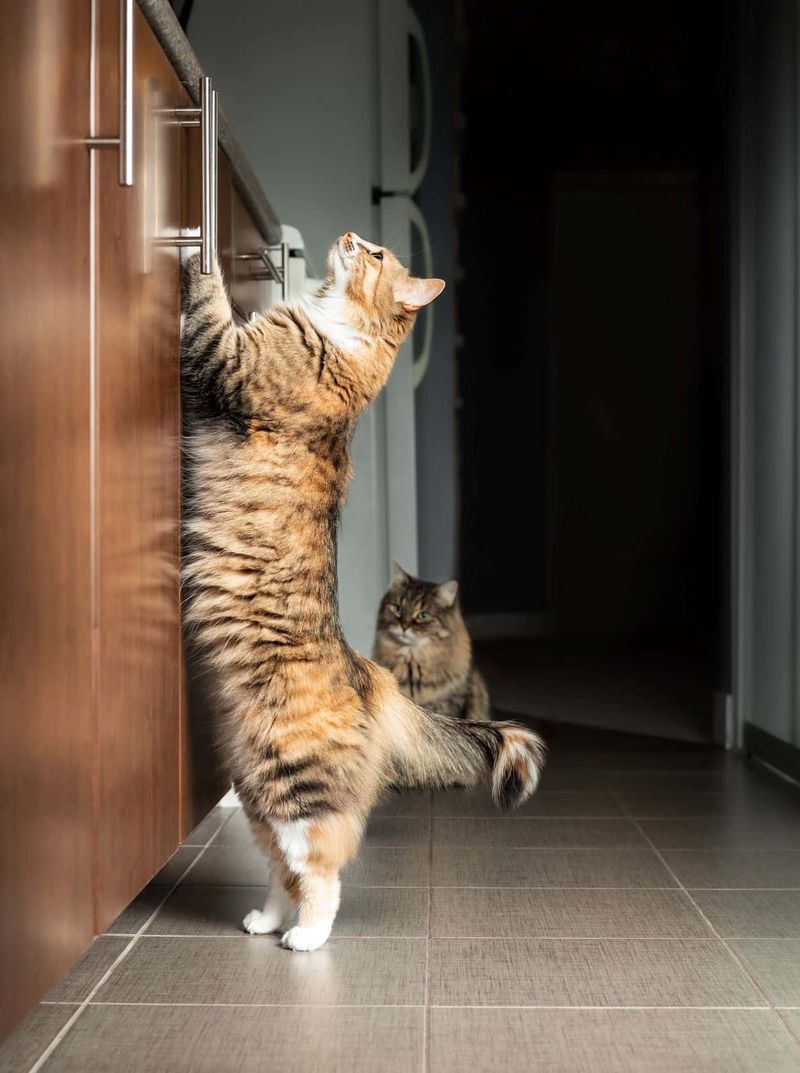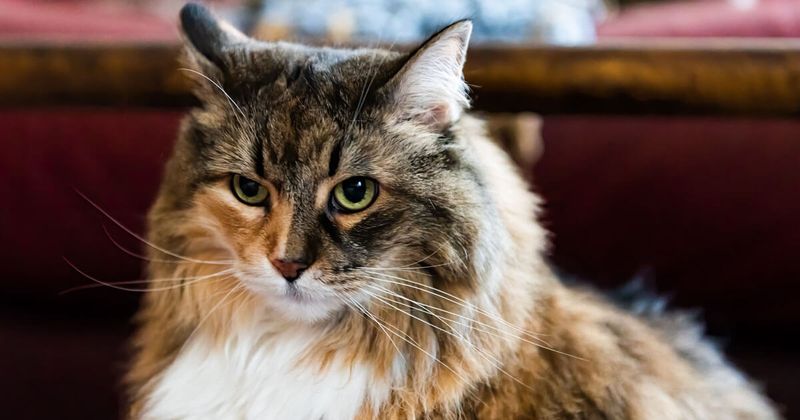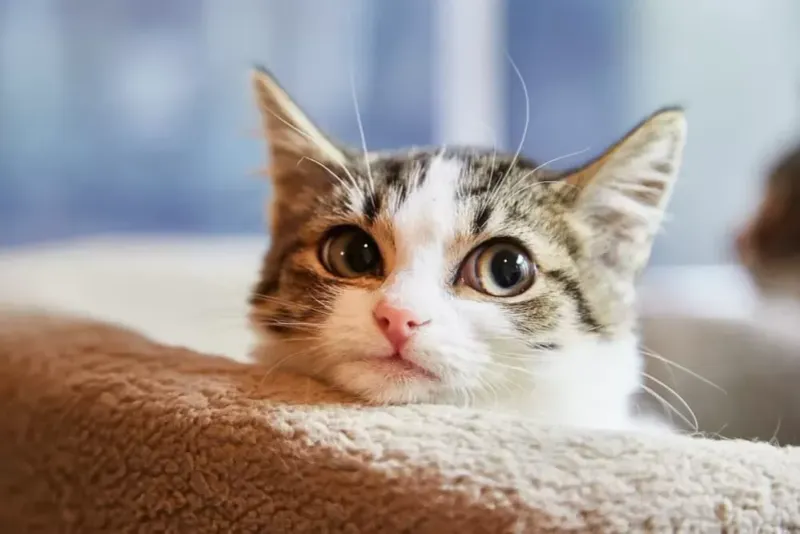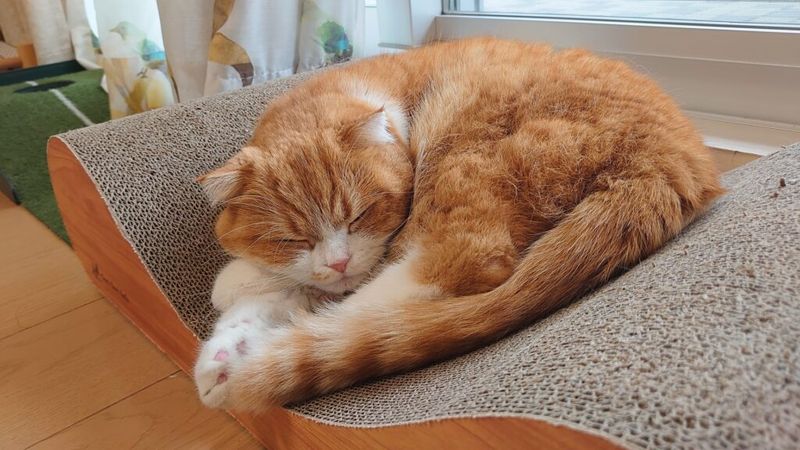📖 Table of Content:
- 1. Sudden Litter Box Avoidance
- 2. Increased Water Consumption
- 3. Unexpected Weight Loss
- 4. Changes in Vocalization Patterns
- 5. Head Pressing Against Walls
- 6. Breathing Pattern Changes
- 7. Sudden Aggression or Hiding
- 8. Grooming Habit Changes
- 9. Appetite Fluctuations
- 10. Unusual Head Tilting
- 11. Changes in Jumping Ability
- 12. Facial Expression Changes
- 13. Sudden Clinginess or Withdrawal
- 14. Changes in Sleep Patterns
- 15. Posture and Gait Abnormalities
Cats have evolved to conceal signs of illness, often appearing perfectly fine even when something is wrong. This natural instinct can make it difficult to recognize when a feline companion needs medical help. Their quiet resilience is admirable, but it can also delay much-needed treatment.
Subtle changes in behavior, appearance, or routine often speak volumes. A shift in eating habits, litter box use, or grooming patterns might be more than just a mood swing. These minor signals can point to significant health concerns that shouldn’t be overlooked.
Veterinarians are trained to notice the quiet clues most people miss. Early detection plays a crucial role in treating many feline conditions effectively. Paying close attention to these changes can make all the difference in keeping a cat healthy and safe.
1. Sudden Litter Box Avoidance
Cats who suddenly stop using their litter box may be suffering from urinary tract infections, kidney disease, or bladder stones. This behavior change isn’t about spite or training issues—it’s your cat signaling something’s wrong.
Male cats experiencing litter box problems need immediate attention as they can develop life-threatening urinary blockages within hours. Female cats aren’t immune to serious issues either.
Look for other clues: straining without producing urine, crying while attempting to urinate, or blood in the urine. These symptoms together with litter box avoidance require an emergency vet visit.
2. Increased Water Consumption
Excessive thirst in cats often signals diabetes, kidney disease, or hyperthyroidism. Normal cats typically drink very little water, getting much of their hydration from food. When your usually water-averse kitty starts draining the bowl repeatedly, something’s amiss.
Measuring water intake can help your vet make a diagnosis. Try tracking how often you refill the bowl over 24 hours. A healthy cat typically drinks about 3.5-4.5 ounces of water per 5 pounds of body weight daily.
Increased urination typically accompanies increased drinking. Together, these symptoms warrant prompt veterinary attention, especially in older cats.
3. Unexpected Weight Loss
Rapid or unexplained weight loss in cats is a red flag for veterinarians. Even a pound—which may seem minor—represents a significant percentage of a cat’s body weight and deserves attention. Hyperthyroidism, diabetes, dental disease, and cancer commonly cause feline weight loss.
Regular weighing helps catch this symptom early. Consider purchasing an inexpensive kitchen scale or baby scale to monitor your cat’s weight at home monthly. Weight loss despite normal or increased appetite is particularly concerning.
Some cats lose weight gradually enough that owners don’t notice until the cat appears significantly thinner. When in doubt, compare current photos with older ones.
4. Changes in Vocalization Patterns
A typically quiet cat who suddenly becomes vocal—or a chatty cat who falls silent—may be communicating distress. Increased meowing, especially at night, can indicate cognitive dysfunction in senior cats, similar to dementia in humans. It might also signal pain, thyroid issues, or high blood pressure.
Hoarse meows or voice changes warrant investigation too. These could indicate laryngeal problems, respiratory infections, or masses affecting the vocal cords. Cats with hyperthyroidism often develop a distinctive, loud, raspy meow.
Record unusual vocalizations on your phone to play for your veterinarian. This documentation helps them understand exactly what’s happening when you’re not at the clinic.
5. Head Pressing Against Walls
Head pressing—when a cat purposefully pushes their head against walls or furniture—requires immediate veterinary attention. This behavior indicates neurological problems like brain tumors, infections, or toxin exposure. It’s not the same as head butting for affection.
True head pressing involves sustained pressure against hard surfaces and appears compulsive. Cats doing this may also pace, seem disoriented, or walk in circles. Their pupils might appear different sizes, another neurological warning sign.
Never wait to see if this behavior resolves on its own. Head pressing represents a true emergency that could progress rapidly without treatment. Even if it happens just once, contact your veterinarian right away.
6. Breathing Pattern Changes
Healthy cats breathe quietly and steadily, taking 20-30 breaths per minute while resting. Open-mouth breathing, noticeable abdominal movement during breathing, or rapid shallow breaths signal respiratory distress requiring emergency care. These changes often indicate heart failure, asthma, or respiratory infections.
Count your cat’s breathing rate occasionally when they’re sleeping to establish their normal pattern. Watch for increased effort—flared nostrils, extended neck, or pronounced rib cage movement during breathing. These are never normal.
Cats panting after play should recover quickly. Continued labored breathing isn’t normal feline behavior like it might be in dogs. When in doubt about breathing changes, err on the side of caution and seek veterinary help immediately.
7. Sudden Aggression or Hiding
Cats who become uncharacteristically aggressive or who start hiding constantly are often in pain. A formerly friendly cat who hisses or swats when touched may have arthritis, dental disease, or internal injuries. Similarly, a social cat who begins hiding under beds or in closets likely feels vulnerable due to illness.
Pay attention to specific triggers for aggression. Does your cat react when touched in certain areas? This helps pinpoint pain locations. For hiding behavior, note whether your cat emerges for meals or treats.
Both behaviors represent significant changes in a cat’s normal social patterns and deserve veterinary investigation. Cats instinctively mask weakness, so when they display these obvious behavior changes, their discomfort is likely substantial.
8. Grooming Habit Changes
Did you know cats spend about half of their awake time grooming? If your cat suddenly starts grooming way more—or hardly at all—it might be time for a vet visit. Overdoing it can lead to bald spots and sore skin, often caused by things like allergies, bugs, or stress.
Under-grooming results in a dull, greasy, or matted coat. Arthritic cats may stop grooming areas they can’t comfortably reach. Obese cats struggle with proper grooming too. Dental pain can make tongue movements uncomfortable, reducing overall grooming.
Senior cats with cognitive dysfunction or diabetes may forget grooming routines entirely. A previously fastidious cat with a suddenly unkempt appearance needs veterinary evaluation, not just a bath or brushing session.
9. Appetite Fluctuations
If your cat’s eating habits suddenly change, it’s usually a sign something’s wrong. Eating more than usual could mean diabetes, an overactive thyroid, or even worms. Eating less? That could be anything from a sore tooth to something more serious like kidney trouble or cancer.
Cats who act hungry but approach food then walk away may be experiencing nausea or pain when eating. Those who drop food while eating might have dental issues making chewing painful. Cats who suddenly prefer soft food over kibble likely have mouth pain.
Any appetite change lasting more than 24 hours warrants veterinary attention. A cat who hasn’t eaten for two full days needs emergency care to prevent hepatic lipidosis—a potentially fatal liver condition triggered by fasting.
10. Unusual Head Tilting
A cat consistently holding their head at an angle suggests vestibular disease—a condition affecting balance. This head tilt often accompanies circling, stumbling, abnormal eye movements, and disorientation. Inner ear infections, brain tumors, or stroke can cause these symptoms.
Vestibular issues sometimes cause cats to roll repeatedly or fall to one side. They may become reluctant to move, appearing stuck in place. Nausea frequently accompanies vestibular problems, so affected cats might drool or avoid eating.
While some vestibular conditions resolve with time and medication, the initial symptoms require prompt diagnosis. Don’t assume your cat will “sleep it off”—head tilting needs same-day veterinary evaluation to rule out serious neurological conditions and begin appropriate treatment.
11. Changes in Jumping Ability
Noticed your cat avoiding their favorite perch or hesitating before a jump? That could mean they’re dealing with joint pain or muscle weakness. Arthritis is incredibly common—affecting over 90% of cats over 12—but it’s often missed because people chalk it up to “just getting old.”
Heart disease can also reduce jumping ability as cats conserve energy and avoid exertion. Neurological conditions might make cats misjudge distances or lose coordination during jumps. Even vision problems can make cats uncertain about jumping.
Don’t dismiss this subtle change. Modern veterinary medicine offers many options for managing conditions that affect mobility. Pain relief, joint supplements, environmental modifications, and specialized treatments can help restore comfort and confidence to jumping cats.
12. Facial Expression Changes
Subtle changes in a cat’s facial expressions can reveal discomfort or illness. Partially closed eyes (squinting) often indicate pain, particularly when accompanied by a tightened facial appearance. A grimace with flattened whiskers or ears held slightly back suggests discomfort rather than relaxation.
Pupils that remain dilated in normal lighting might indicate pain, anxiety, or high blood pressure. Asymmetrical facial expressions—where one side appears different from the other—could signal neurological problems like facial nerve paralysis.
Frequent lip licking or jaw chattering outside of meal times suggests nausea or dental pain. Take photos of concerning expressions to show your veterinarian, as cats often mask these signs during stressful clinic visits.
13. Sudden Clinginess or Withdrawal
If your cat suddenly turns clingy or distant, it could be more than just a mood swing. An aloof kitty seeking attention might be in pain or feeling uneasy. And if your usually cuddly cat starts hiding or avoiding you, it could be sick and trying to rest and recover.
Senior cats sometimes develop increased neediness due to cognitive dysfunction or sensory decline. They seek reassurance as their world becomes more confusing. Hyperthyroid cats may become hyperactive and overly attentive, while cats with pain often withdraw from interaction.
Trust your instincts about personality changes. You know your cat best, and these behavioral shifts often represent the earliest warning signs of health problems, appearing before more obvious physical symptoms develop.
14. Changes in Sleep Patterns
While cats are famous for sleeping 12-16 hours daily, significant changes to sleep habits warrant attention. A cat sleeping substantially more than usual might be conserving energy due to illness or pain. Conversely, restlessness or inability to settle comfortably can indicate discomfort or cognitive changes.
Cats with hyperthyroidism often sleep less and appear hyperactive. Those with pain may change preferred sleeping locations, avoiding previously favorite spots that now require painful jumping or climbing. Older cats with cognitive dysfunction may reverse day-night patterns, sleeping more during the day and vocalizing at night.
Track sleep changes alongside other symptoms. Note whether your cat seems truly restful during sleep or appears tense and uncomfortable. These observations provide valuable diagnostic information for your veterinarian.
15. Posture and Gait Abnormalities
Alterations in a cat’s posture or movement can indicate pain or neurological problems. A hunched posture with the head down often signals nausea or abdominal discomfort. Cats with arthritis may walk stiffly, favor certain limbs, or struggle to move after resting.
Watch for subtle weight-shifting when standing or sitting, indicating discomfort in specific areas. A cat consistently standing with weight unevenly distributed might have joint pain. Weakness in the hind legs can indicate diabetes, spinal issues, or heart disease.
Even minor limping deserves attention. Unlike dogs, cats rarely limp without a significant reason. “Walking low” with a flattened posture might indicate pain or feeling threatened. These changes develop gradually, so comparing current movements with videos from healthier times helps identify problems.
